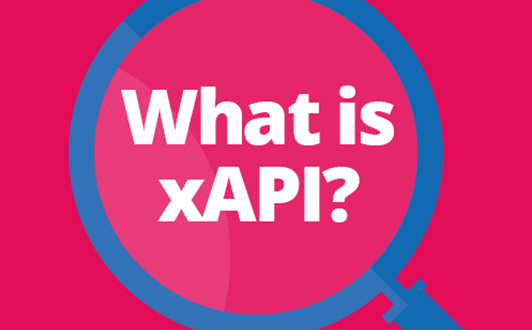
Finally, there is a way to track learner behaviors outside of the confines of an LMS or web browser.
In 2010, Advanced Distributed Learning (or ADL) decided that it was finally time to update the Sharable Content Object Reference Model (or SCORM) standard as the online education world vastly expanded beyond the confines of the web browser on a typical desktop system. Learners were now doing things that conventional SCORM could not capture, such as mobile learning without always a connection to the Internet, gaming, virtual worlds, simulators, social learning or other kinds of content accessed outside of a web browser.
The ADL explains, “The Experience API (xAPI) enables tracking of learning experiences, including traditional records such as scores or completion. It also stores records of learners’ actions, like reading an article or watching a training video”.
In short, xAPI now allows the course provider to have the flexibility to meet the educational and technological needs of today’s learner.
Here is how xAPI (also known as Tin can) works: When an activity needs to be recorded, the application sends secure statements in the form of “Noun, verb, object” or “I did this” to a learning record store (or LRS). Learning Record Stores record all of the statements made. An LRS can share these statements with other LRSs. An LRS can exist on its own, or inside an LMS. It’s that simple.
At Media Learning Systems, we would love to speak with you on how to demystify xAPI and apply it to your organization’s specific online educational training needs. Contact us today to get started!
We would love to quote on your next project, or just chat more about xApi.
Media Learning Systems Inc.
1 King West, 48th Floor
Toronto, Ontario
M5H 1A1
Copyright © 1996-2025, Media Learning Systems Inc. All Rights Reserved.